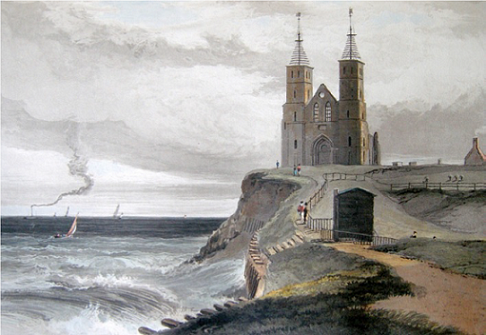
7 pm
The Watercolour World, whose joint patrons are TRH The Prince of Wales and the Duchess of Cornwall, is a registered UK charity established to create a visual record of the world before photography by aggregating digital images of watercolours of record from pre-1900 on to a single geographically indexed website. The primary objectives of TWW are: to preserve and make publicly available the documentary information contained in watercolours; to collate already-digitised UK and international public and private documentary watercolour collections, to make them available to all via the TWW website; to digitise, and encourage the digitisation of documentary watercolours in the UK and internationally and to encourage the participation of the public in sharing information and helping identify unrecognised images.
TWW is a British initiative but an entirely international project, designed to make available to all the largely forgotten documentary record contained in pre-1900 watercolour paintings. Initially, the majority of pre-1900 images on the TWW website is likely to relate to the British Isles. Increasingly, though, we expect that the number of images covering the rest of the world will come to dominate, the result of British and of other Powers’ naval, military and colonial activity during that period.
From the outset, a key focus of the TWW Project has been to make freely available to all those other territories and societies on whom these activities impacted, the unique documentary information and visual evidence contained in the relevant Watercolour material.
The Watercolour World is a successor to The Public Catalogue Foundation, a charitable project set up to catalogue all oil paintings in public ownership in the UK. It was during this 10-year project that the obscurity into which our watercolour collection had fallen became increasingly apparent, with exhibitions of watercolours anywhere being generally thin in number and content.
There is some urgency behind this project. Watercolours are not physically enduring images. An unknown number will already have been lost or thrown away. The fragility and the vulnerability of the materials involved now means that the task of capturing these images in a more durable, digital form is becoming increasingly urgent. No matter where these images are owned or held, for the common good they need to be accessible to the global public and preserved through digitisation for future generations.
The simple truth is that whilst watercolours are and will remain one of humanity's more delightful art forms, many if not most of the images created before 1900 were documentary in their intent. So. Until this watercolour record is available to us all in an indexed and searchable form, its ability accurately to illustrate our past, arguably its highest value, will not be recovered.
For additional information:
Richard MacMichael
902-424-8897
richard.macmichael@novascotia.ca